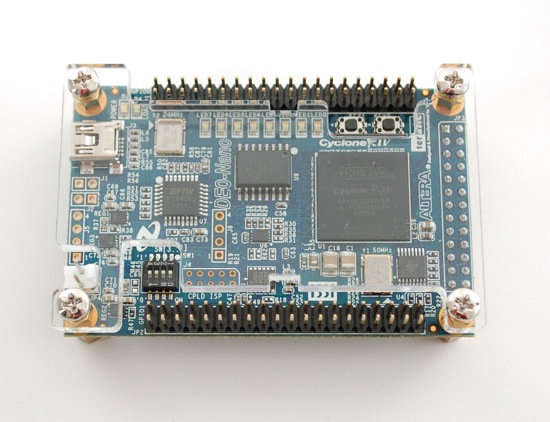- Home»
- News»
- All News Articles»
- New Development Platforms
3 Jan 11
For most embedded electronics projects, the lowest cost and most effective method would be to use microcontroller development boards. But in some applications, such as video processing, speech synthesis and recognition, and other high-volume, high-speed data processing applications, it would be worthwhile to consider a FPGA (Field Programmable Gate Array) solution. Instead of using a software development tool to code sequential instructions, FPGA’s have a hardware development tool to code digital logic circuits to perform a specific function. This would enable the device to operate much faster than by using coded instructions. FPGA’s usually have a lot of I/O pins compared to an MCU so they are able to handle large amounts of data in parallel.

An ideal choice for starting out would be the DE0-Nano – Altera Cyclone IV FPGA starter board. This development board is designed for beginners and has a built-in USB ‘blaster’ programming interface for FPGA configuration. Two CDs are supplied along with the software necessary to ‘compile’ and ‘upload’ code into the board. The software is available for Windows and Linux computers.
The DE0-Nano has a total of 153 I/O pins a collection of interfaces including two external GPIO headers to extend designs beyond the basic DE0-Nano board, On-board memory is included, with 32 MB of SDRAM and 2 Kb of EEPROM for data storage and frame buffering, as well as a few useful switches, LEDs, and push-buttons.
The Altera Cyclone IV 4C22 FPGA used on the board contains several useful features. Some of these include 22,320 Logic elements, 66 Embedded 18 x 18 multipliers, 4 General-purpose PLLs, a 3-axis accelerometer, and an 8 channel A/D converter. The board uses very little power and small batteries can be used in portable mobile applications, or it can be powered through a USB cable.
